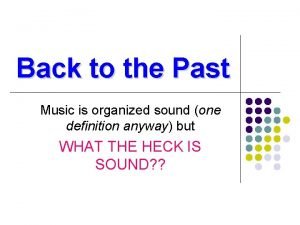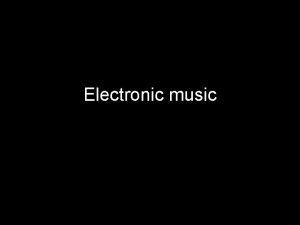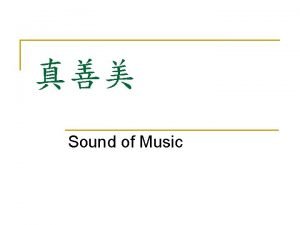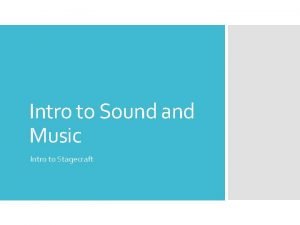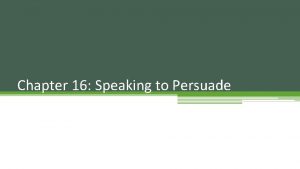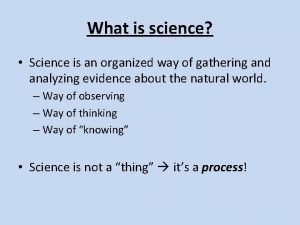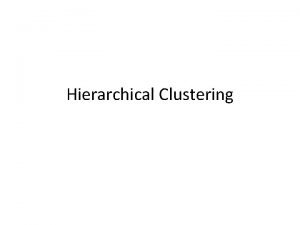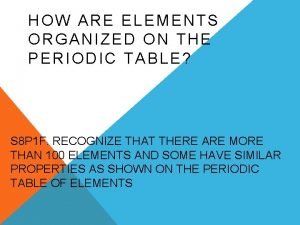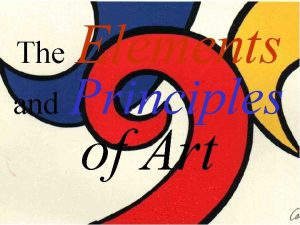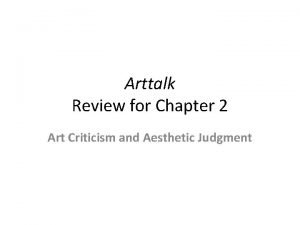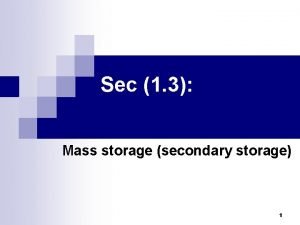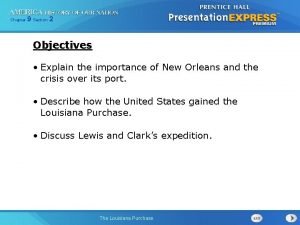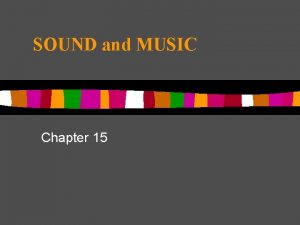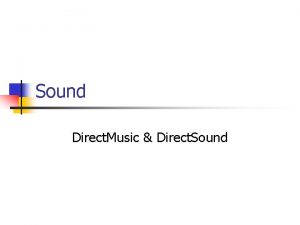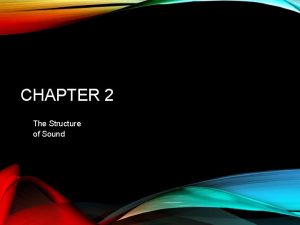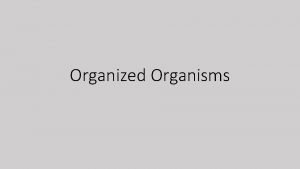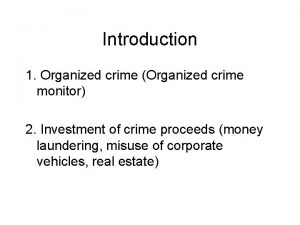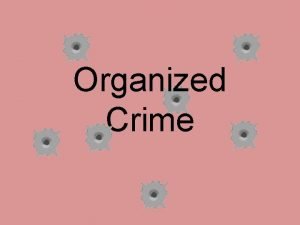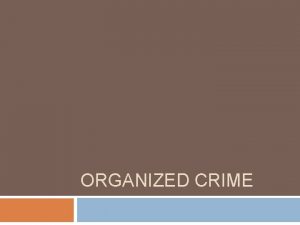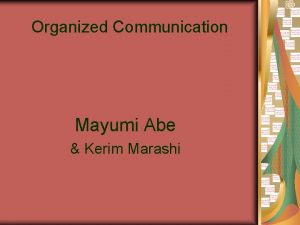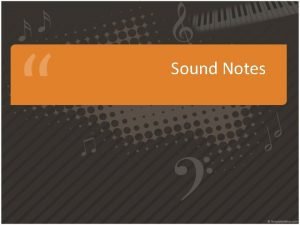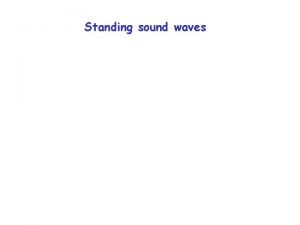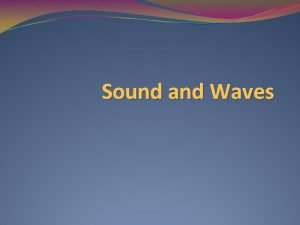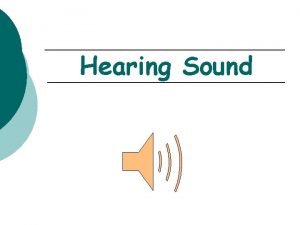What is Music Music is Organized Sound Sound








































- Slides: 40

What is Music? • Music is Organized Sound • Sound with a purpose or meaning

What is Sound? • The Vibration of Air in a specific pattern forming Sound Waves

Sound Waves • Sound waves can be low and high. • High and Low sound waves are called? • PITCH

Note • In music we use a note as a symbol to represent high and low pitch.

Staff • In order to see the note, we use a music staff. • A music staff has FIVE lines numbering from bottom to top (low to high pitch) Five Lines 5 4 3 2 1

Staff • And it has four spaces numbering from bottom to top (low to high pitch) Four Spaces 4 3 2 1

Staff + Note

The Clef A CLEF is used to determine the actual pitch of a note on the staff. Different CLEF’S are used to accommodate the wide range of pitches performed by voices and instruments.

Treble Clef & === The symbol above is called the TREBLE CLEF. The Treble Clef is used for instruments who play higher in pitch. c Copyright Steve Vepraskas 2005

Treble Clef The instruments of the Treble clef: Flute Trumpet Oboe Clarinet Saxophone French Horn

Bass Clef ? === The symbol above is called the BASS CLEF. The BASS Clef is used for instruments who play low pitches. c Copyright Steve Vepraskas 2005

Bass Clef • The Instruments of the Bass Clef: Euphonium Bassoon Trombone Tuba

Musical Alphabet • The Musical Alphabet assigns a letter name to each line and space on the staff. • The M. A. only uses 7 letters of the written alphabet. The letters repeat in a sequence. FGABCDE Lower PITCH Higher FGABCDE FGA

Musical Alphabet w w w & w ==w The Lines of the Treble Clef: F D B G E Elm Grove Band Does Fine

Musical Alphabet w w w & w == The Spaces of the Treble Clef: FACE E C A F

Musical Alphabet • The Complete Treble Clef Staff E F G A B C D E F

Musical Alphabet w ? w w w ==w The Lines of the Bass Clef: A F D B G Good Bands Do Fine Always

Musical Alphabet w ? w w w == The Spaces of the Bass Clef: G E C A All Cows Eat Grass

Musical Alphabet • The Complete Bass Clef Staff G A B C D E F G A

Ledger Lines • Ledger Lines are lines that extend the staff above and below.

Ledger Lines

Steady Beat • The Steady beat is the constant pulse in a piece of music. • The Steady beat can be grouped in patterns. The most common grouping is in 4.

Note Values • A note can have different lengths of sound. • The sound duration depends on the value of the note and the number of steady beats it holds.

Note Values The Whole Note: 4 steady beats of sound

Note Values The Half Note: 2 steady beats of sound

Note Values The Quarter Note: 1 steady beat of sound

Note Values 1 Whole Note 4 steady beats 2 Half Notes 4 Quarter Notes + + + 2 SB + 2 SB Equals 4 SB + 1+1+1+1 Equals 4 SB

Bar lines • The staff is divided into equal parts by Bar lines. • A Double Bar tells you when to stop the music.

Measure • A Measure is the space between bar lines. • A Measure contains the steady beat.

Time Signature • The Time Signature appears at the beginning of the music after the clef sign. • The Time Signature has two numbers, one above the other. • The top number tells you how many steady beats are in each measure. • The bottom number tells you what value note illustrates the steady beat.

Time Signature • The most common time signature is 4 over 4. however there are many different time signatures in music. 4 4 There are 4 steady beats 1 2 34 Each steady beat is illustrated by a quarter note

Time Signature • The Steady beat quarter notes may be arranged in different values.

Rests • Music is not only made up of sounds, but also musical silence called Rests. • The duration of musical silence is determined by the value of the REST.

Rests The Whole Rest. The Whole rest is equal to 4 steady beats of musical silence.

Whole Rests

Rests • The Half Rest: • The Half Rest is equal to 2 steady beats of musical silence.

Half Rests

Rests • The Quarter Rest: • The quarter rest is equal to 1 steady beat of musical silence.

Quarter Rest

Dotted Notes • When a DOT is placed next to a note, it adds half of that notes value.
 Organized sounds
Organized sounds Online music portfolio
Online music portfolio Organized sound definition
Organized sound definition Elements of music in art appreciation
Elements of music in art appreciation What music that employs electronic music
What music that employs electronic music Classification of pamulinawen
Classification of pamulinawen Very romantic music
Very romantic music Youtube.comwatch
Youtube.comwatch Define stagecraft
Define stagecraft “a sound mind is in a sound body”
“a sound mind is in a sound body” Tiny astronauts
Tiny astronauts Aegean free zone
Aegean free zone Speeches on questions of fact are usually organized
Speeches on questions of fact are usually organized Sstamata
Sstamata How knowledge is acquired represented and organized
How knowledge is acquired represented and organized How are electrons organized around the nucleus
How are electrons organized around the nucleus A system is a combination of
A system is a combination of Human resource management in retail
Human resource management in retail A set of nested clusters organized as a hierarchical tree
A set of nested clusters organized as a hierarchical tree Dried juice in pharmacognosy
Dried juice in pharmacognosy How are elements organized in the periodic table?
How are elements organized in the periodic table? Elements are organized on the blank
Elements are organized on the blank Heap organized tables
Heap organized tables The parts of an image are organized so that one
The parts of an image are organized so that one When criticizing functional objects
When criticizing functional objects Which movement is the most highly organized
Which movement is the most highly organized Nilufer organized industrial zone
Nilufer organized industrial zone Who is she
Who is she Loosely organized groups who share interests and activities
Loosely organized groups who share interests and activities Mass storage is organized into
Mass storage is organized into Organized, searchable information found on a computer.
Organized, searchable information found on a computer. Multidisciplinary vs interdisciplinary
Multidisciplinary vs interdisciplinary Serial killers: the real life hannibal lecters
Serial killers: the real life hannibal lecters Organized crime osrs
Organized crime osrs A long and carefully organized journey
A long and carefully organized journey Low organized games
Low organized games War making and state making as organized crime summary
War making and state making as organized crime summary Galt secondary lymphoid organ
Galt secondary lymphoid organ Unions
Unions How are elements organized
How are elements organized Organization of the periodic table
Organization of the periodic table


